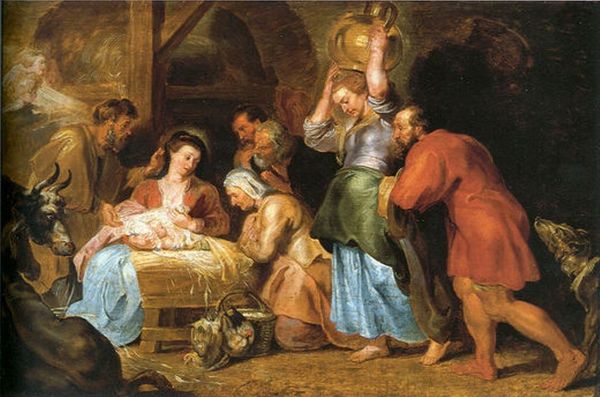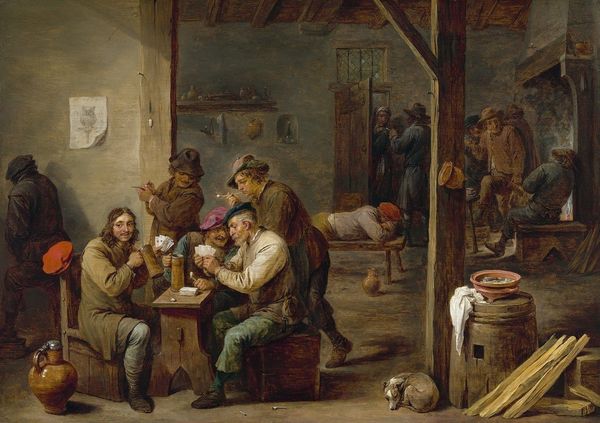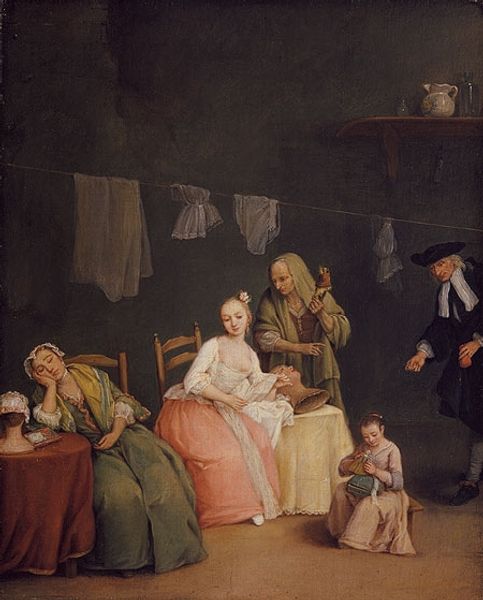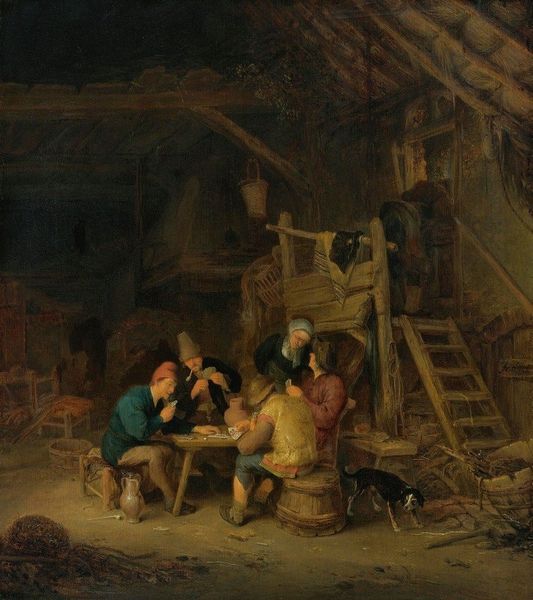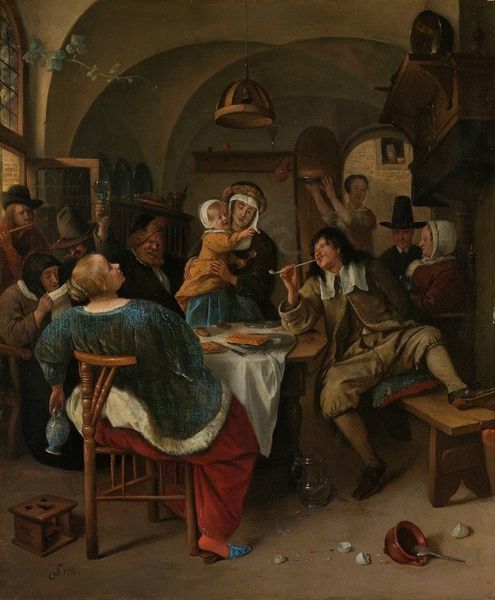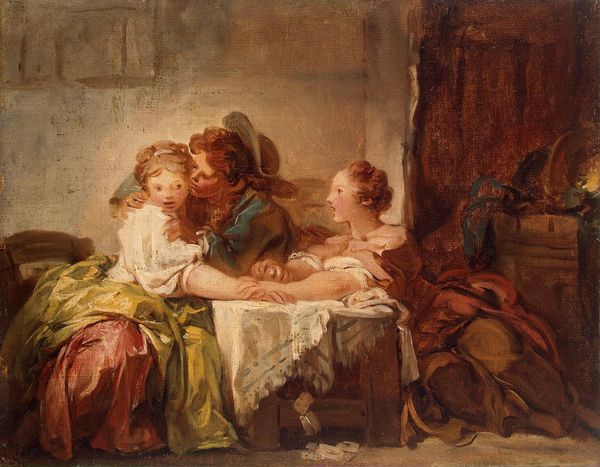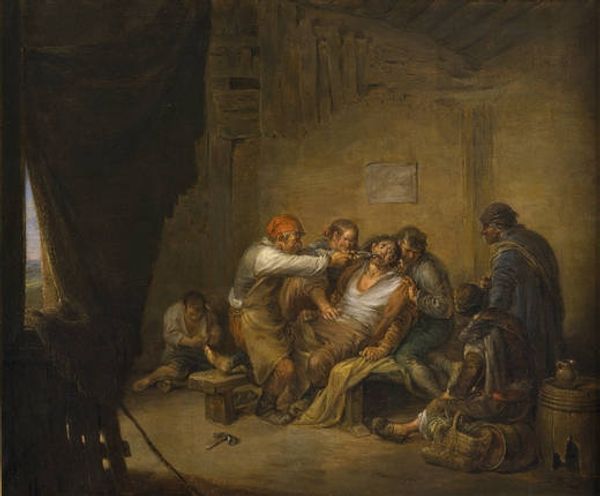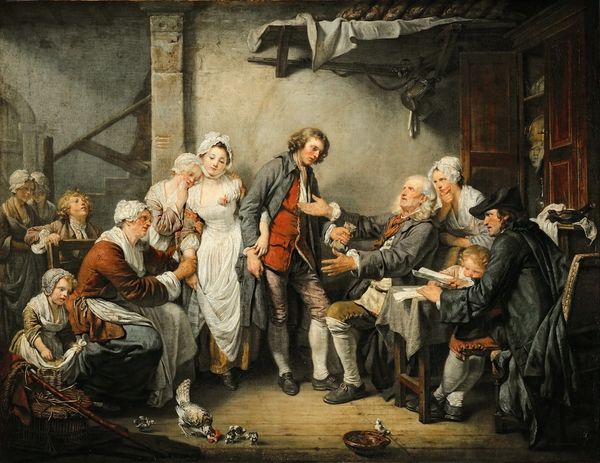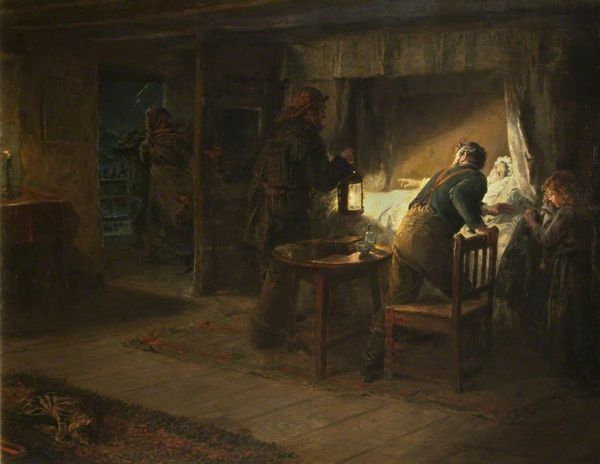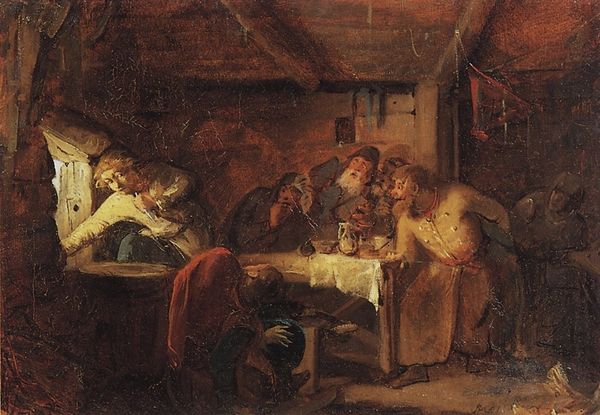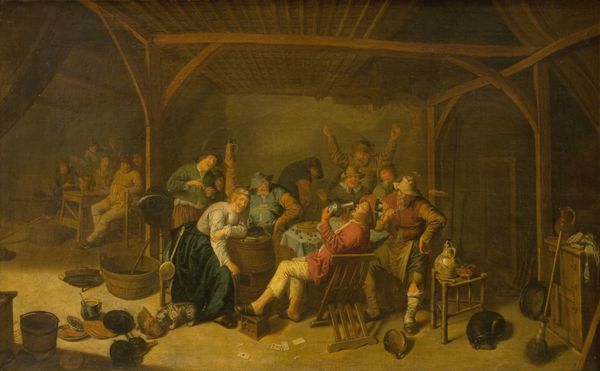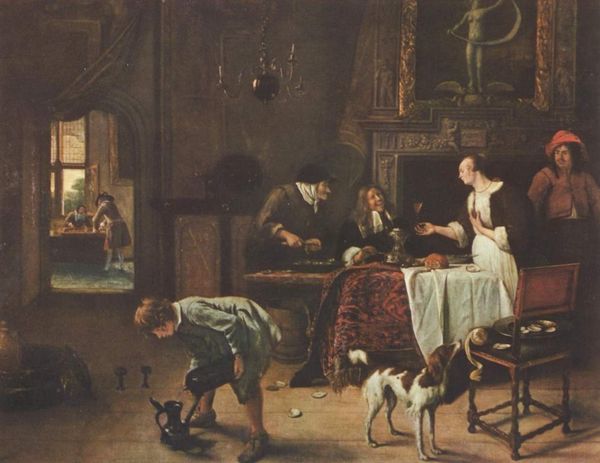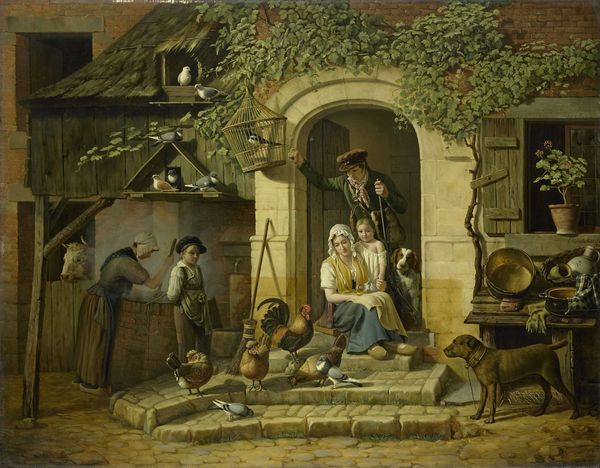
Copyright: Public domain
Curator: Here we see George Morland's painting, "The Miseries of Idleness," completed around 1780. What are your first thoughts? Editor: The palpable sense of unease strikes me immediately. The cramped interior, the weariness etched on the faces, the stark contrast between the dim interior and that glimpse of outside light… it speaks volumes about their material conditions. Curator: Indeed. Morland, although popular, often portrayed scenes of rural life with a critical eye. He’s offering a window into the domestic sphere, one layered with social commentary regarding class and gender dynamics. Editor: Observe the father’s languid posture, his idle pipe, juxtaposed against the mother's attentiveness to the children. How does this arrangement highlight prevailing ideologies around work and familial duty in late 18th-century England? Also note the clear indications of alcoholic substance use, as it clearly informs this snapshot of "misery." Curator: Excellent point. We see this echoed in feminist critiques of the period, particularly concerning the restricted roles assigned to women and their often-unacknowledged labor. There is this interplay of expectation and experience in this seemingly genre piece. What about the material handling here? The way Morland uses oil paint. Editor: Well, look closely at the texture, the almost crude brushstrokes in the background versus the delicate rendering of fabrics and faces. The materials mirror the narrative – the coarseness of the situation versus the idealized representation of the family. There's a deliberate unevenness that reinforces the idea of social disparities, right? Curator: Precisely. This Romantic-era piece is not merely a snapshot but a complex encoding of social power and resistance through composition, technique, and materiality. Editor: Morland offers a critique not just through what he depicts, but how he crafts the painting. Understanding these elements of production helps deconstruct this “slice of life” into a narrative with inherent societal commentary. Curator: So while it looks like the kind of cozy, middle-class family gathering often presented in portraiture, there are tensions at play, aren't there? I am especially intrigued about the message in its title, "The Miseries of Idleness," does it point toward some greater commentary that even now can resonate? Editor: This artwork stands out as it reminds us to delve into the tangible, crafted reality that makes the politics visible within it. I will walk away reflecting on how that concept challenges conventional art and the art market still to this day.
Comments
No comments
Be the first to comment and join the conversation on the ultimate creative platform.
